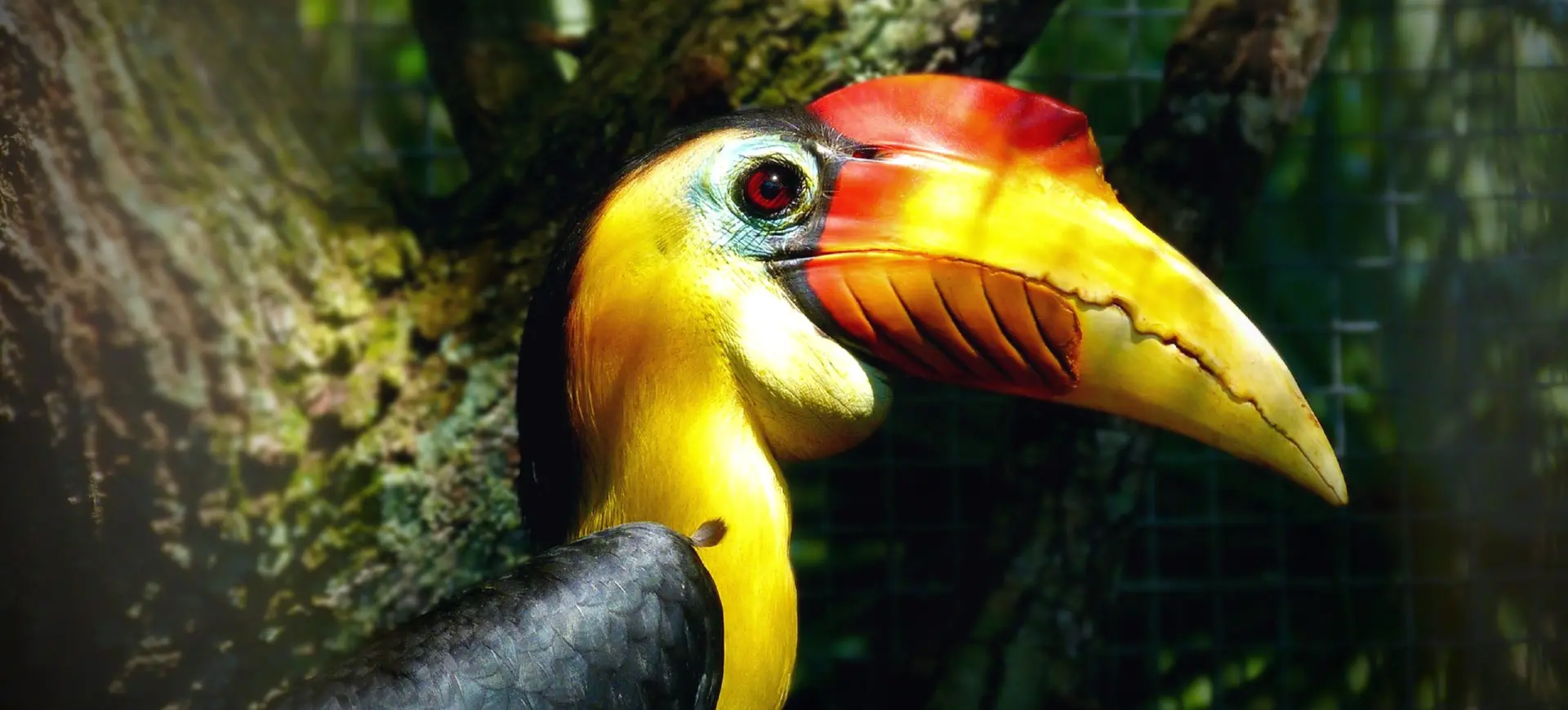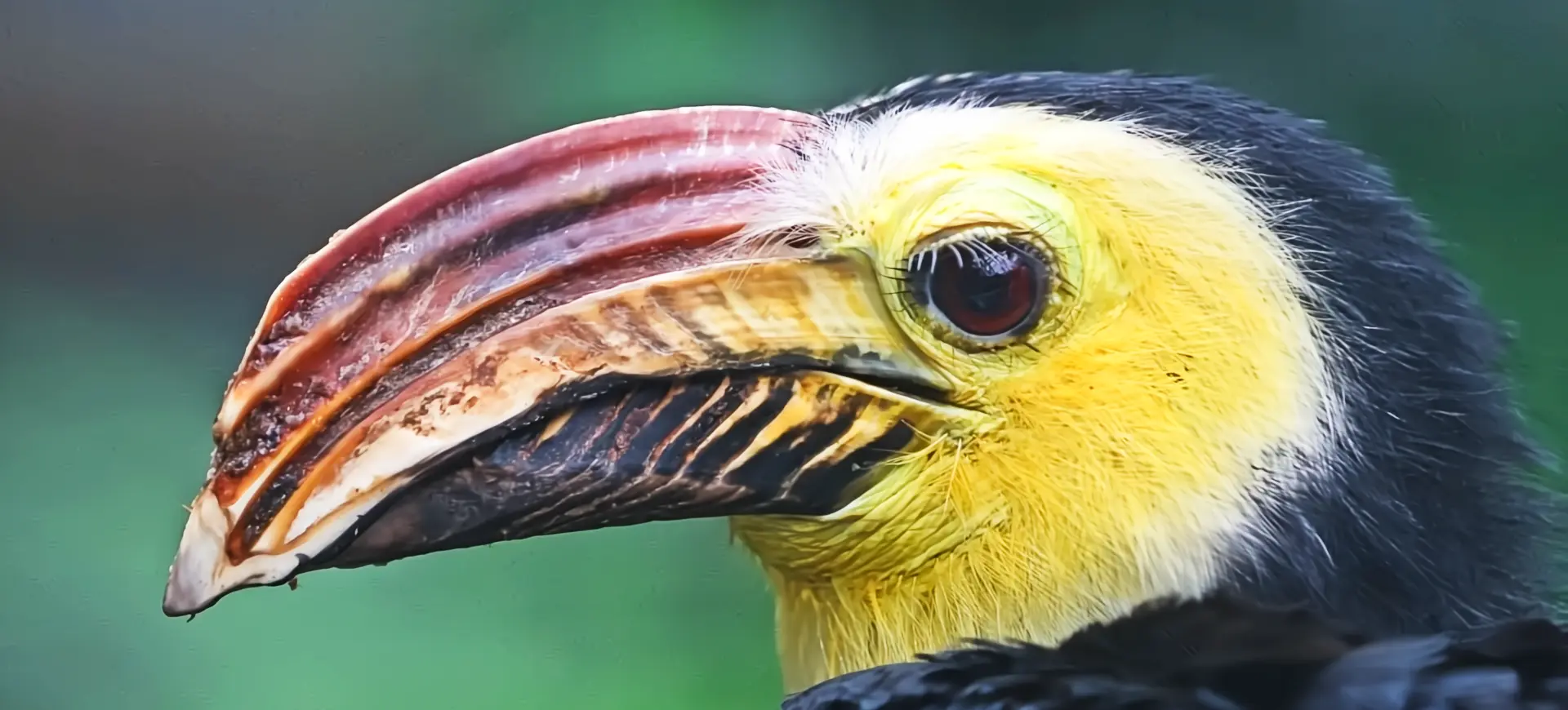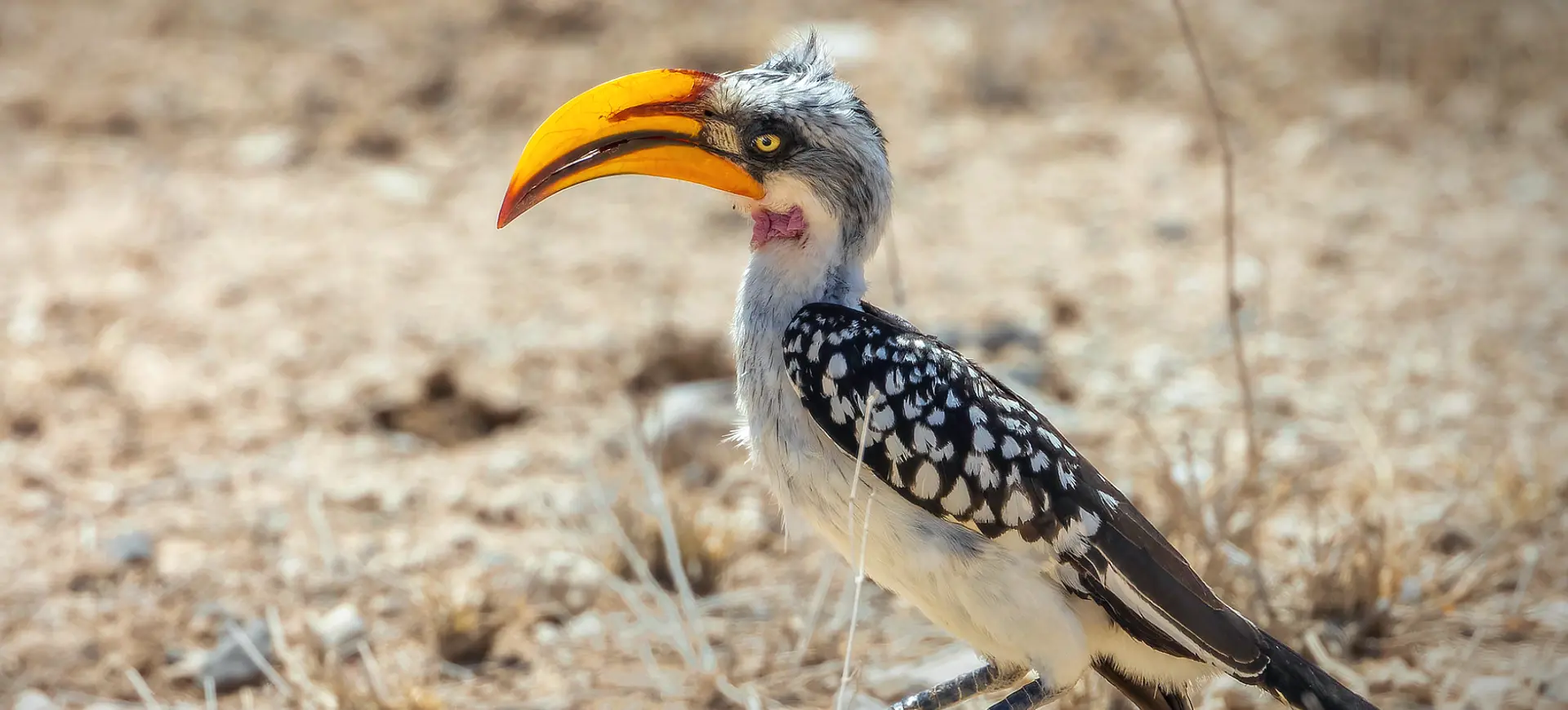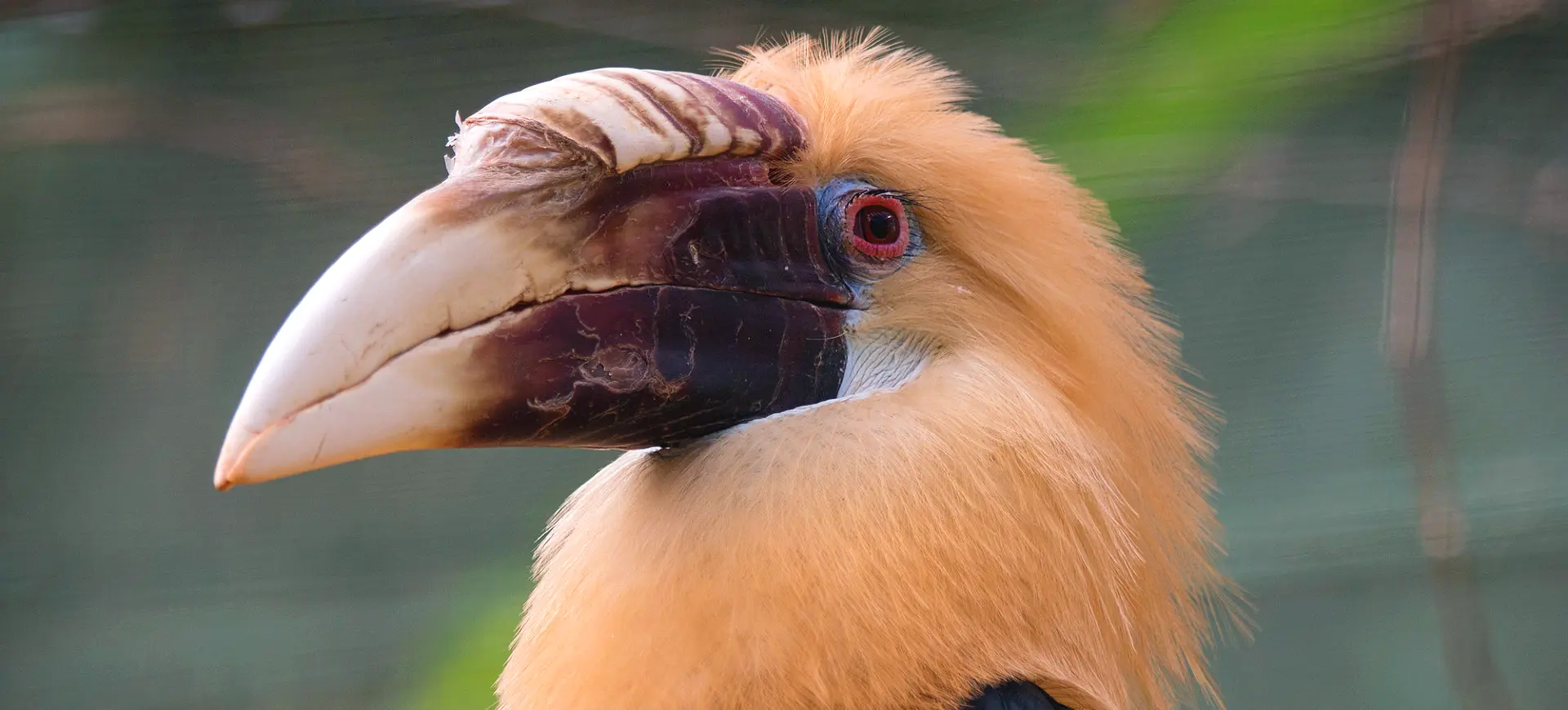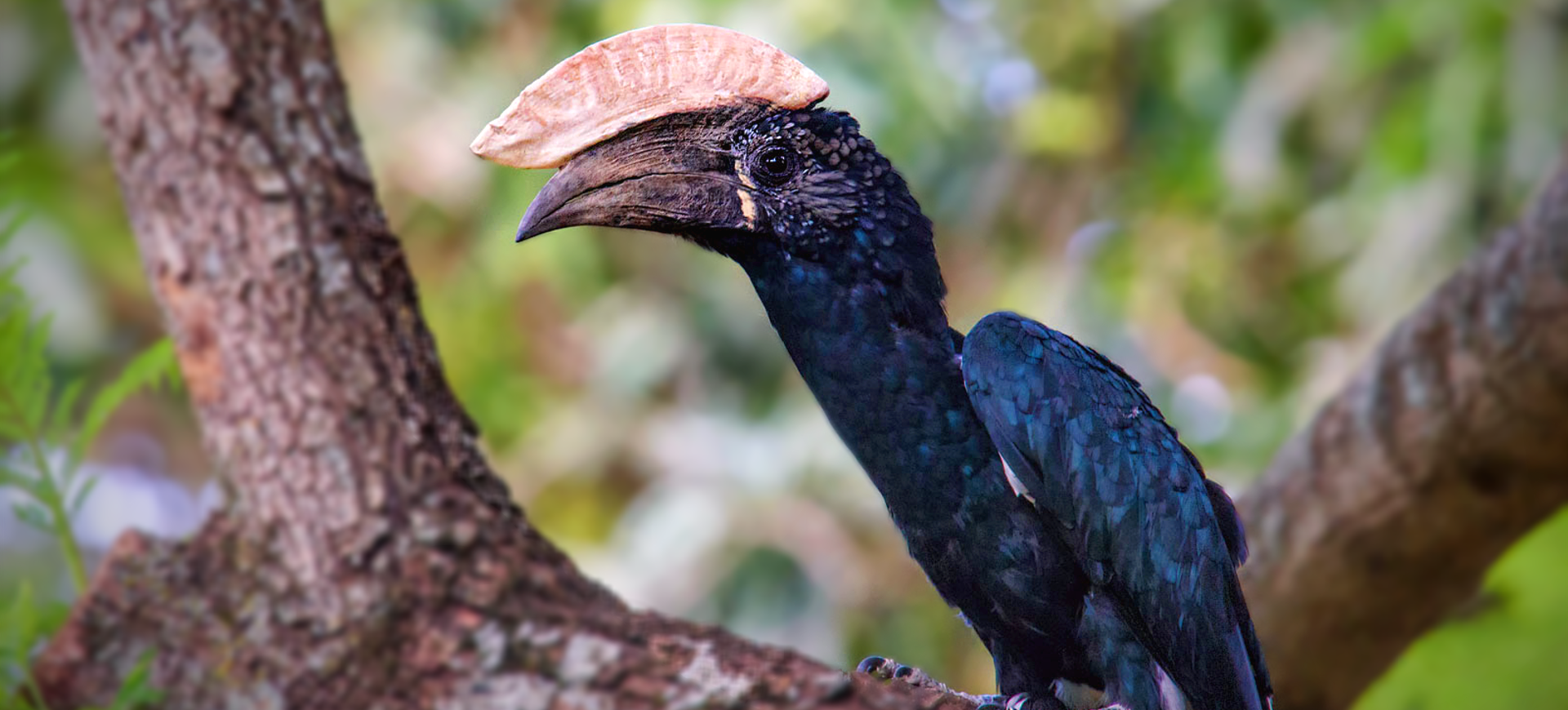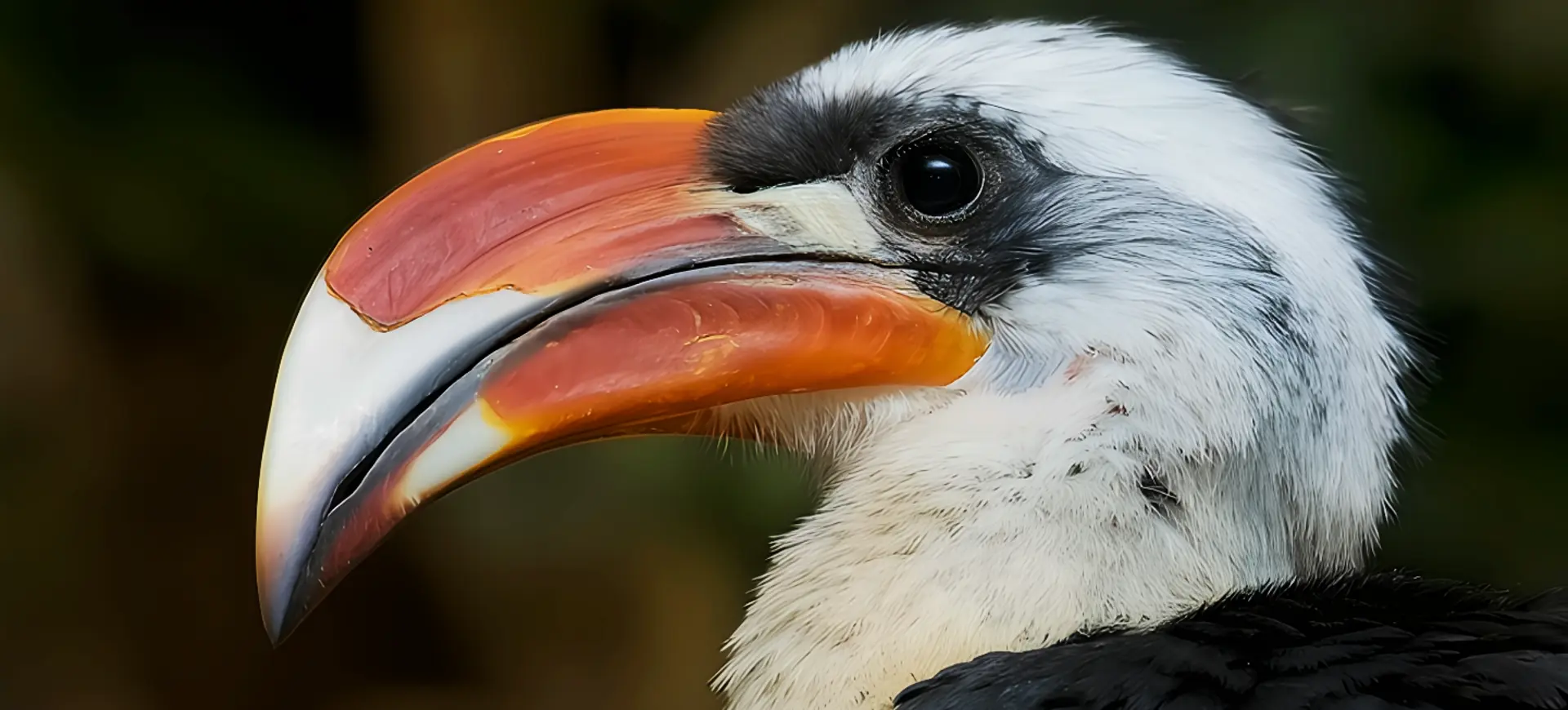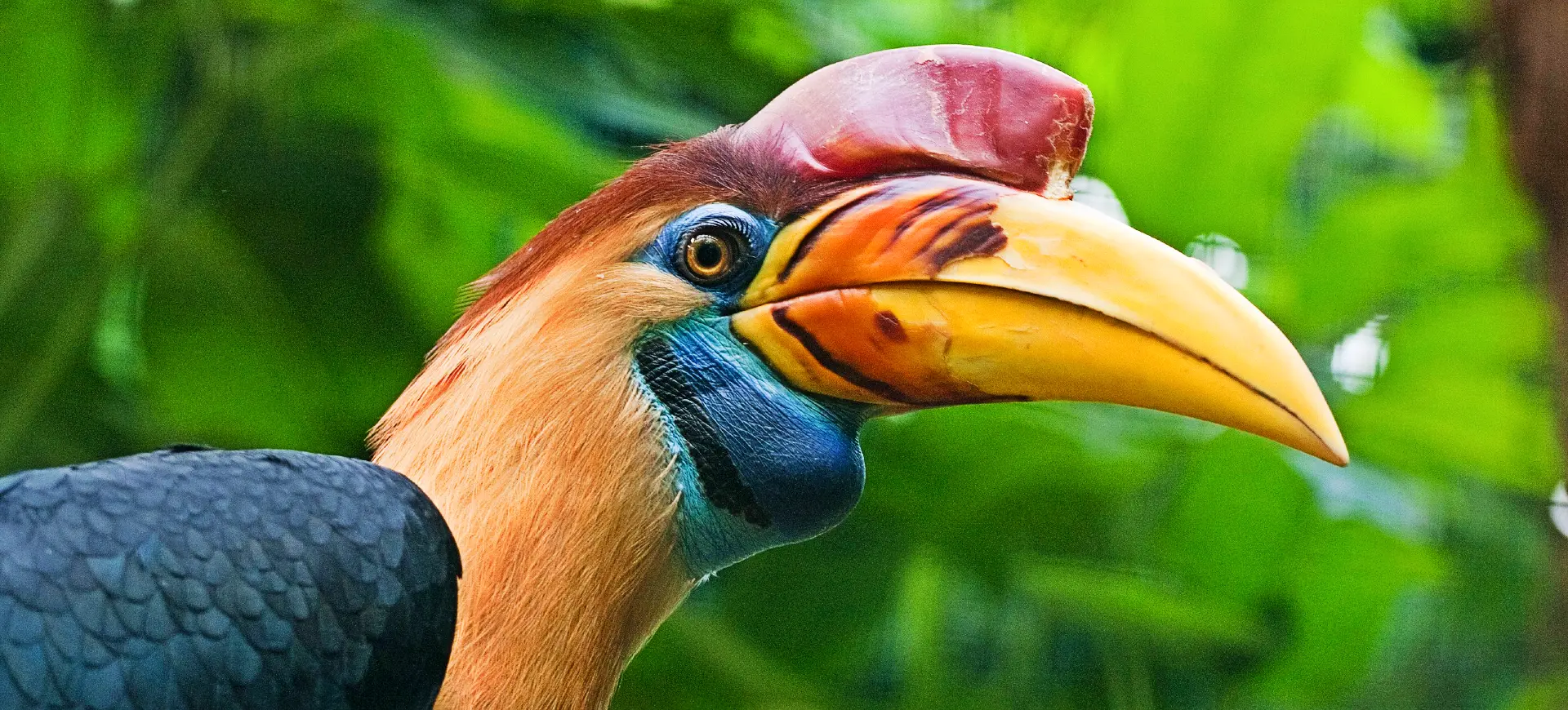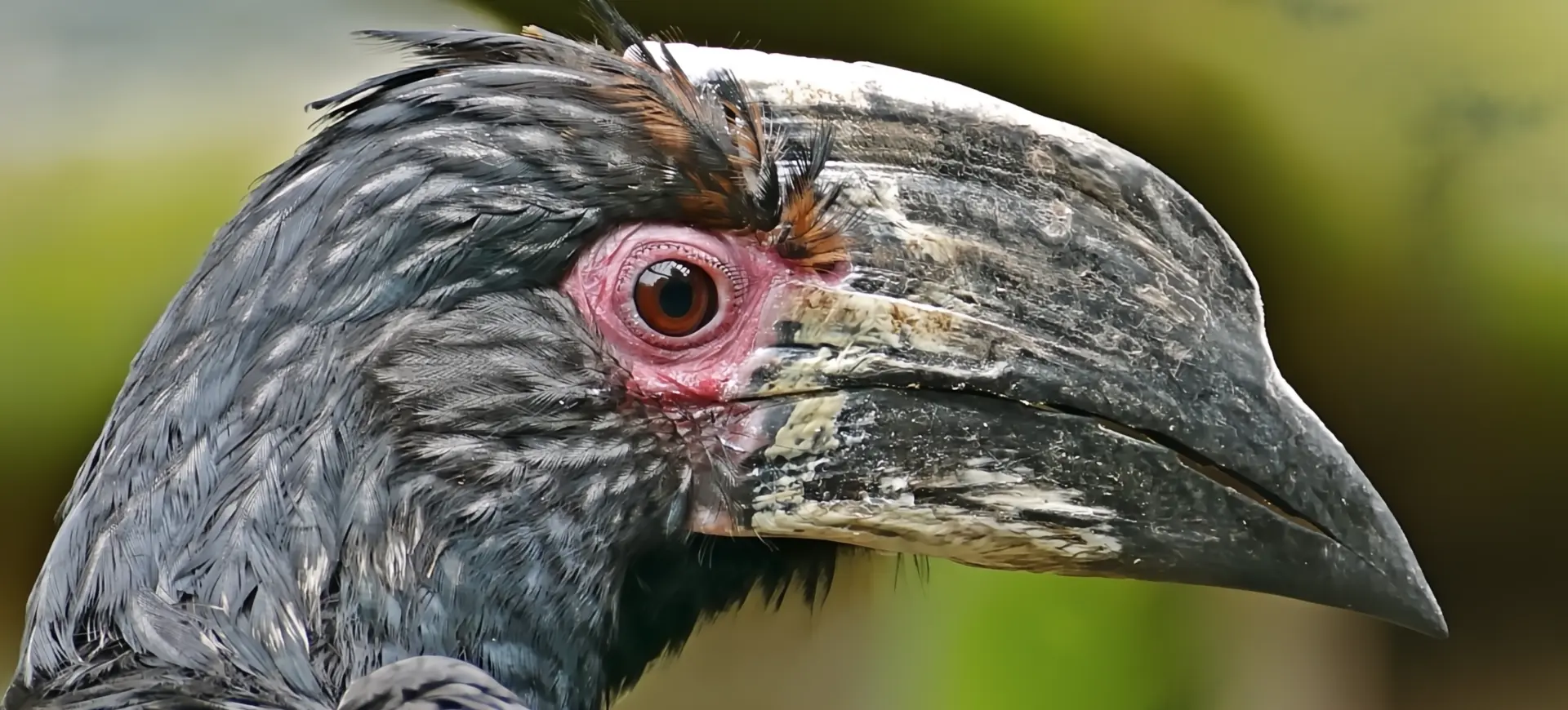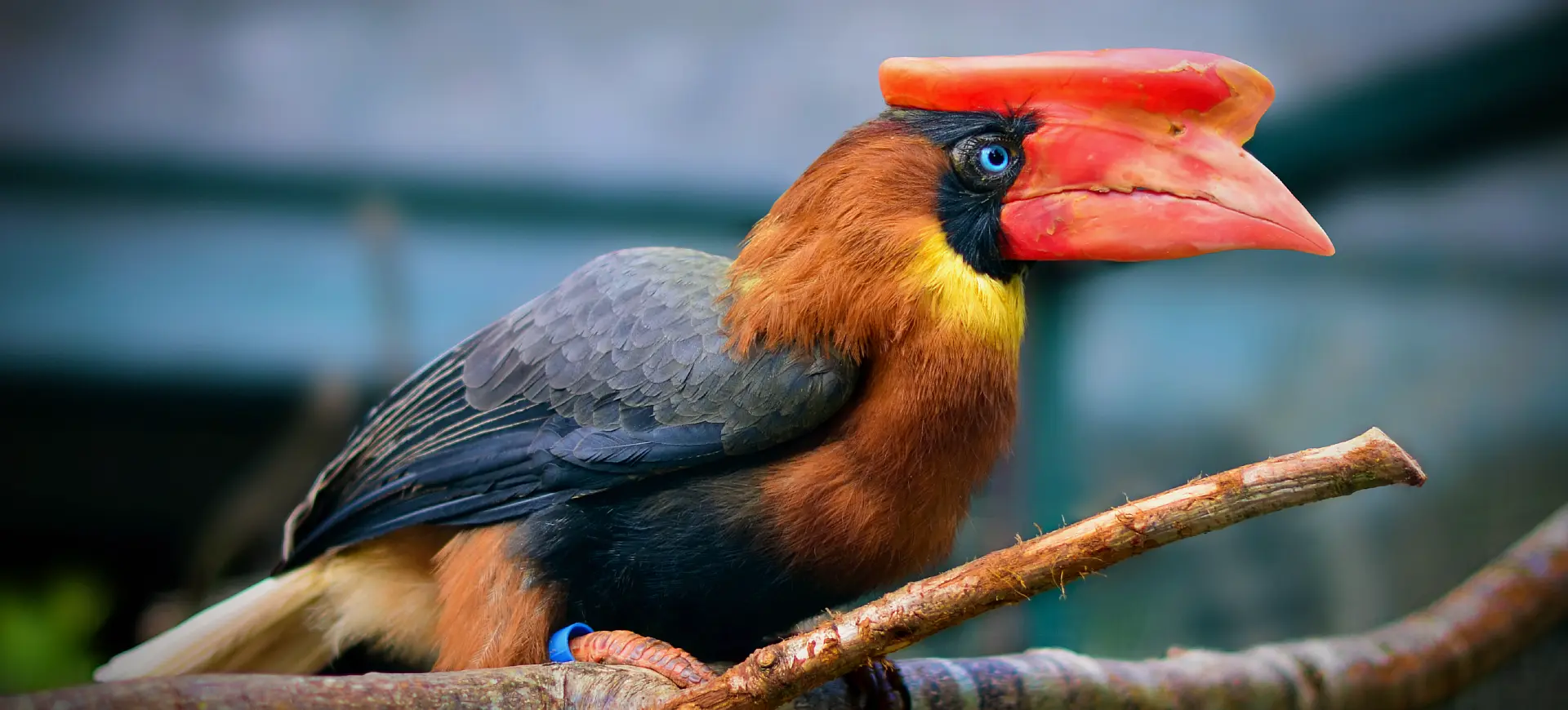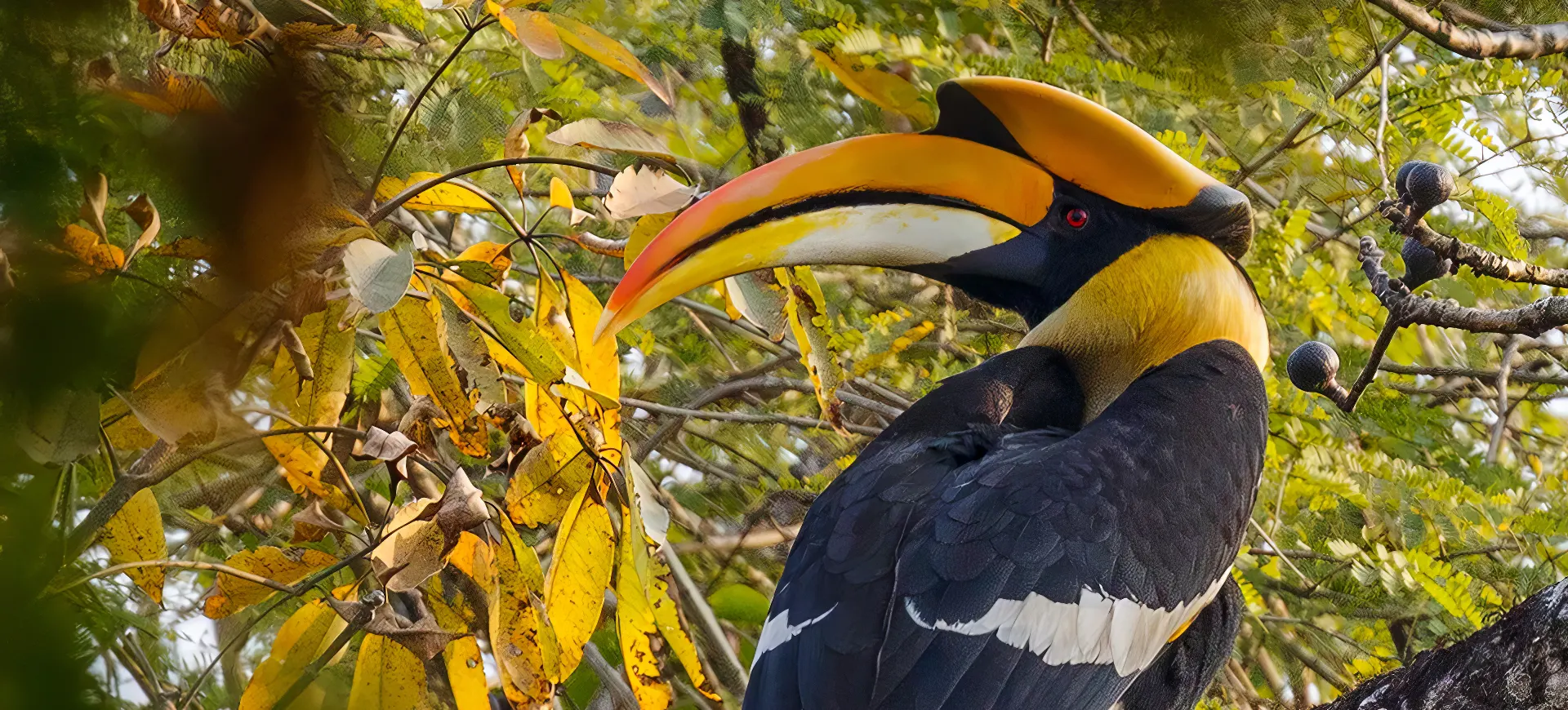Overview
The rhinoceros hornbill is a striking bird known for its large size, vibrant plumage, and ornate casque, which resembles a rhinoceros horn. Native to Southeast Asia, this species dwells primarily in tropical and subtropical forests. The bird’s vivid colors and unique characteristics make it a significant cultural icon in many indigenous societies, symbolizing purity and fidelity.
Adult rhinoceros hornbills have black plumage contrasted with white legs and tail feathers. The casque, which grows atop the bill, is hollow and serves various functions, including resonance amplification for calls. This unique feature is made of keratin and begins as a small bump before gradually enlarging as the bird matures.
Males and females are generally similar in appearance but can be differentiated by eye color. Males have red or orange eyes, while females have white or blue eyes. The bird is renowned for its monogamous mating habits and elaborate nesting rituals, which involve sealing the female inside a tree cavity for incubation and feeding.
Taxonomy
Kingdom
Phylum
Class
Order
Family
Genus
Species
Type
Physical Description:
The rhinoceros hornbill is notable for its large casque, which is yellow and black. The body is predominantly black, with white feathers on the abdomen and tail. The bird’s enormous bill is yellowish or orange and curves downward, serving as an effective tool for foraging and breaking fruits.
The size of the rhinoceros hornbill makes it one of the larger species. Its body is robust, and its wings are broad, suited for short flights through dense forests. The legs are sturdy and relatively short, adapted for hopping along branches rather than walking.

Lifespan: Wild: ~35 years || Captivity: ~40 years

Weight: Male: 6.6–7.9 lbs (3–3.6 kg) || Female: 4.6–6.2 lbs (2.1–2.8 kg)

Length: Male: 43–47 inches (110–120 cm) || Female: 38–42 inches (96–107 cm)

Height: Male: 43–47 inches (110–120 cm) || Female: 38–42 inches (96–107 cm)

Wingspan: 59–63 inches (150–160 cm)

Top Speed: 30 mph (48 km/h)
Characteristic:
Native Habitat:
The rhinoceros hornbill inhabits tropical and subtropical forests. These include both primary and secondary forests, as well as some plantations. The bird depends on large, mature trees for nesting and foraging, making it susceptible to habitat loss due to logging and deforestation.
This bird prefers elevations ranging from sea level up to 4,500 feet, although it can be found at higher altitudes in some regions. It is particularly abundant in regions with high rainfall and dense forest cover, where its preferred food sources are readily available.
Climate Zones:
Biomes:
WWF Biomes:
Biogeographical Realms:
Continents:
Diet:
Diet & Feeding Habits:
Rhinoceros hornbills are primarily frugivores, consuming a diet rich in fruit. They particularly favor figs, which comprise a significant portion of their diet. The bird’s large bill enables it to easily grasp and manipulate fruit, which it often tosses into the air before catching and swallowing.
Aside from fruit, they eat small mammals, birds, and insects. During nesting season, the male is responsible for feeding both the female and the chicks. He gathers food in his beak and delivers it to the nesting site, where the female remains sealed inside with the eggs and young chicks.
Mating Behavior:
Mating Description:
Rhinoceros hornbills are monogamous birds that form lifelong bonds with their mates. Courtship involves mutual preening and vocalizations, which are amplified by their casques. After selecting a nesting site, usually a cavity in a large tree, the female seals herself inside using mud and feces, leaving only a small hole for the male to deliver food.
During the incubation period, the male brings food to the sealed cavity, where the female and, eventually, the chicks reside. The female lays one to two eggs, and both parents are responsible for rearing the young. Once the chicks are large enough, the female breaks the seal, and both parents continue to feed and care for them until they fledge.
Reproduction Season:
Birth Type:
Pregnancy Duration:
Female Name:
Male Name:
Baby Name:
Social Structure Description:
Rhinoceros Hornbills are generally solitary or found in small family groups. They are known for their monogamous mating habits and strong family bonds. Communication between these birds involves a variety of vocalizations, including deep hooting sounds amplified by their casques.
During the breeding season, the male and female work together in raising the offspring, demonstrating a high level of parental care. Their social structure and habits contribute to their susceptibility to threats, as the loss of a mate or nesting site can significantly impact the individual bird and its family.
Groups:
Conservation Status:
Population Trend:
The rhinoceros hornbill is currently classified as Near Threatened by the IUCN. This is due to habitat loss and fragmentation, particularly from logging and agricultural activities. The conversion of forests into oil palm plantations is one of the primary threats to their habitat.
Although they can be found in protected reserves, their numbers are declining in areas outside these sanctuaries. The lack of large, mature trees for nesting and foraging makes it difficult for the species to sustain its population. In some regions, the bird is hunted for its casque and feathers, adding to the pressure on its population.
Population Threats:
Illegal hunting is a significant threat, as the rhinoceros hornbill’s casque and feathers are valued for traditional medicines and ornamental uses. Although hunting is not as prevalent as habitat loss, it poses a considerable risk, especially when combined with the bird’s low reproductive rate.
The bird also faces habitat degradation, primarily from logging and agricultural expansion. These activities result in the loss of the large, mature trees crucial for the rhinoceros hornbill’s nesting and foraging, leading to population decline.
Conservation Efforts:
Conservation efforts for the rhinoceros hornbill primarily focus on habitat protection and restoration. This involves the creation of protected reserves and reforestation activities to ensure the availability of large, mature trees for nesting and foraging.
Public awareness campaigns are also essential for the bird’s conservation, educating communities about protecting this unique species. Some programs work towards reducing hunting pressures through legal regulation and community-based conservation initiatives.
Additional Resources:
Fun Facts
- The casque on their bill is hollow and serves as a resonating chamber.
- Their calls can be heard up to a mile away due to the casque.
- They are monogamous birds with strong pair bonds.
- Rhinoceros Hornbills play a crucial role as seed dispersers in their ecosystem.
- They can live up to 35 years in the wild and 40 years in captivity.
- The female seals herself in a tree hole during the nesting period.
- Their diet includes over 60 different types of fruit.
- The male takes sole responsibility for feeding when the female is nesting.
- They are listed as “Near Threatened” on the IUCN Red List.
- They have a unique “aerial” display where they fly in circles to communicate.





